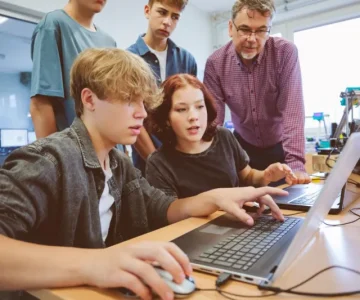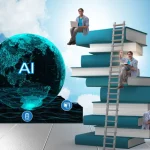From the days when stories were passed along by firelight to today’s world of always-on digital connections, the way we share and retain knowledge has been in constant transformation. Each milestone—spoken tradition, handwritten manuscripts, the printing press, the internet—reshaped not only the tools we use to learn but also the skills we value in that process.
Now we’ve entered a new chapter. Artificial intelligence doesn’t just hand us information—it processes, interprets, and even creates it. While this opens extraordinary opportunities, it also forces us to rethink what it means to truly understand something.
Before the Press: Memory as a Library
Centuries ago, before printing was possible, books were rare treasures. They were copied by hand, often by monks working in dim scriptoria, and most people never saw one up close. If you were lucky enough to read a particular text, you absorbed as much as possible because you might never see it again. In that era, your mind was your bookshelf. Memorization wasn’t just useful—it was essential for preserving ideas, culture, and stories across generations.
Gutenberg’s Breakthrough and the First Knowledge Boom
When movable type made books affordable to produce, the reach of knowledge expanded dramatically. Literacy grew, ideas spread faster, and societies began to evolve in new ways. But with books more accessible, the pressure to memorize vast amounts of text diminished. Instead of holding every fact in your head, you could revisit it later. The focus shifted from retention to exploration, and while this was overwhelmingly positive, it marked a clear change in how we approached learning.
The Internet Era: Infinite Access, New Challenges
The late 20th century’s digital explosion took information sharing to its extreme. Online search tools made it possible to find almost any piece of information instantly. Students could browse global archives without leaving their desks. Yet, with this convenience came a question: why commit facts to memory when they’re always a quick search away? The concept of “cognitive offloading”—relying on external systems to store what we once remembered ourselves—took root. Our challenge shifted from remembering data to filtering and evaluating it.
AI: More Than a Search Engine
Artificial intelligence changes the equation again. Large language models don’t just retrieve information—they assemble it, interpret it, and generate new text. Need a detailed explanation of a complex topic? AI can provide it in seconds. But this ease comes with a risk: if students can produce complete, well-structured work instantly, will they still wrestle with the raw ideas behind it? Without that struggle, the deeper skills of analysis, creativity, and critical thinking could erode.
The Temptation to Skip the Hard Work
Consider a student assigned a research paper. In the past, the process involved gathering sources, synthesizing information, and crafting an argument—an exercise in reasoning as much as in writing. Today, AI can deliver a polished draft almost instantly. While convenient, this shortcut can remove the intellectual challenges that help learners develop lasting insight and problem-solving abilities.
What’s Really at Stake
Deep learning isn’t just about storing facts—it’s about making connections, interpreting meaning, and shaping original ideas. Often, the most valuable understanding comes from the effort it takes to work through difficult material. AI-generated answers may give the impression of mastery, but real comprehension grows from active engagement.
Redefining Education for the AI Era
If AI is here to stay—and it is—then education must adapt without losing its human core. That means:
- Encouraging Creative and Critical Thinking: Use AI as a tool for exploration, not as a replacement for independent thought. Projects that require questioning, debate, and defense of ideas can keep the learning process active.
- Building Emotional and Social Skills: Technology can’t replace empathy, collaboration, and leadership. Group projects, discussions, and service learning will remain essential.
- Promoting Lifelong Learning: Rapid technological change means skills will need constant updating. Curiosity and adaptability will matter more than memorizing static facts.
- Focusing on Purpose: When students understand why they’re learning something, they’re more likely to stay engaged. Connecting lessons to real-world challenges can make knowledge meaningful.
- Treating AI as a Collaborator: Students should learn to question AI’s output, identify its gaps, and integrate it thoughtfully into their work. This transforms AI from a passive answer machine into an active partner in discovery.
A Future Shaped by Curiosity
Every advance in learning technology has shifted the skills we prize. AI is no different. The real threat isn’t that AI will take away our need to learn—it’s that we might choose not to. The learners who will thrive in the future are those who see AI as a springboard, not a substitute. Curiosity, more than any algorithm, will remain our greatest driver of growth.





